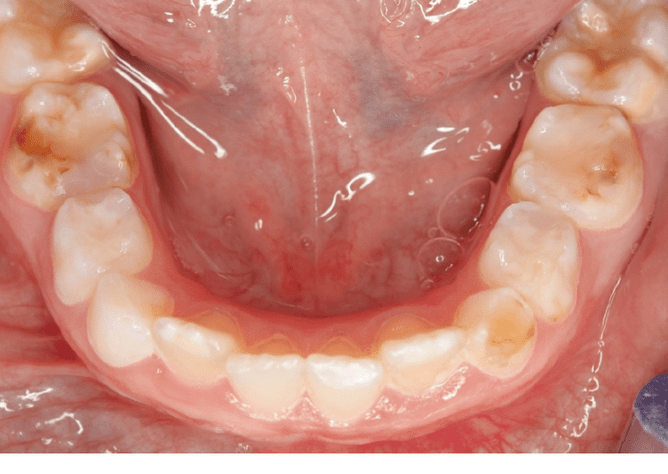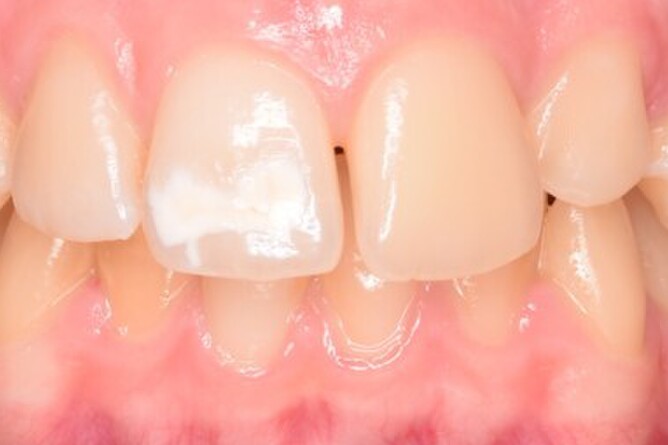Hypomineralisation or 'chalky molars' is one example of a developmental dental defect (D3) and is the most common of the enamel defects effecting 1 in 5 children. It causes a lot of suffering around the world. It typically effects the 6-year old molar, but other molars effected can be the 2-year old molar and in some cases even the adult front teeth can be effected.
The most likely causes of this phenomenon is illness in infants, a health disruption that disrupts the development of a tooth but scientists are not sure if it is the illness itself or the medications that cause the issue.
Hypomineralised teeth are often soft and porous and can often crumble away with brushing and eating. This causes the dentine (which is 'alive') to be exposed and react to hot/cold things, eating and brushing causing pain.
For diagnosis, it is best to first see a dental therapist (free service) 0800 TALK TEETH who may refer you to the hypo mineralisation group (Hypomin Clinic) that is operated around the province by our principal dentist, Dr David Antunovic. They will assess the extent of the issue and will give you some advice on what to do next.
The options that are usually proposed are simple treatments such as fissure sealants, tooth mousse , white fillings (which are often not that successful) or full coverage crowns (eg stainless steel crowns). Sometimes an Orthodontist referral is involved to give expert advice on whether extraction (for severe hypomineralisation involving more than 50% of the tooth) is the best treatment option. Other things the dental therapist/dentist may offer is silver fluoride.
Pictures above: Hypomineralisation seen on the primary second molar, the secondary (adult) first molar and some on the primary canine. Hypomineralisation seen on the adult incisor tooth.

